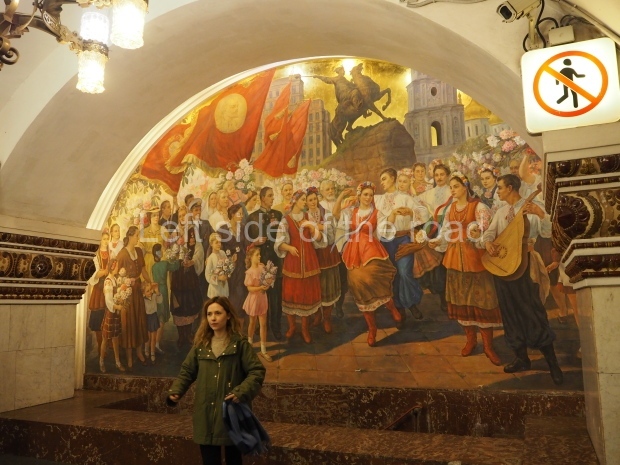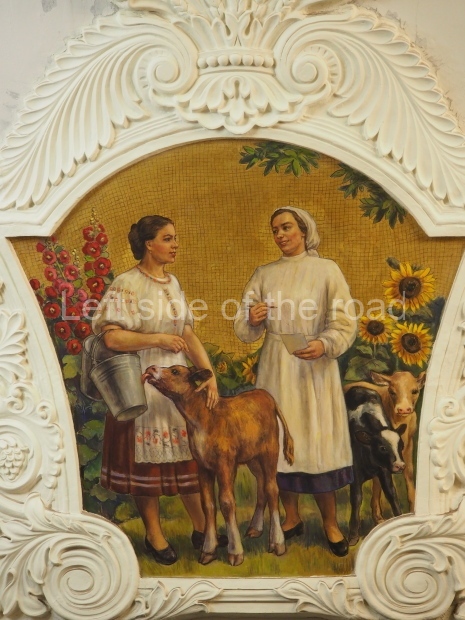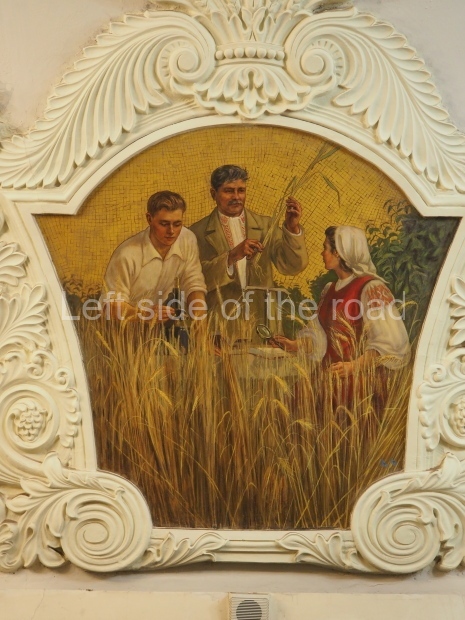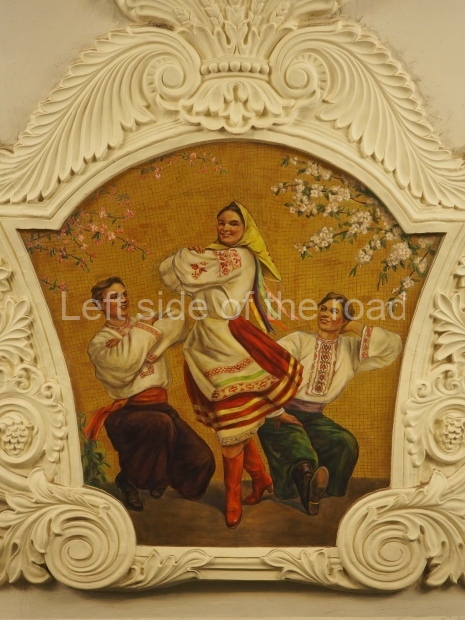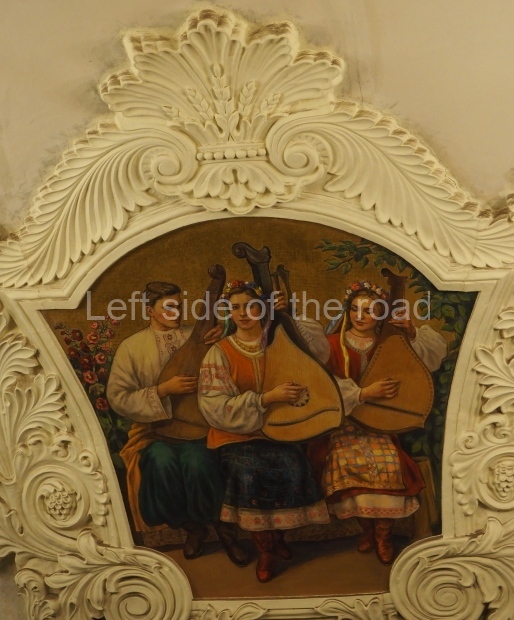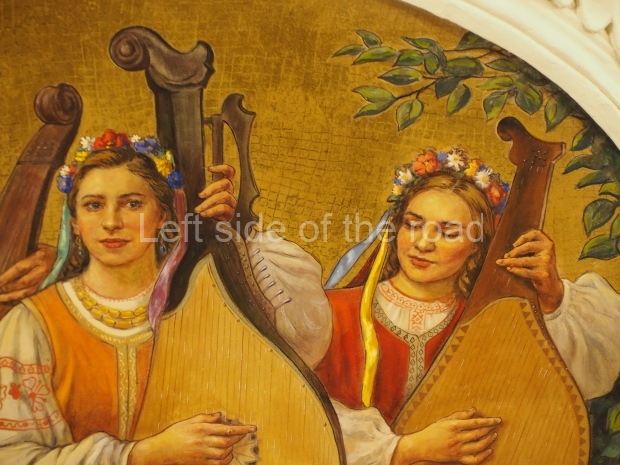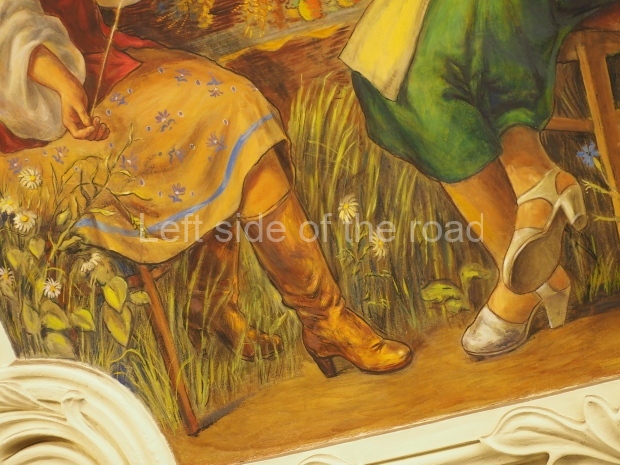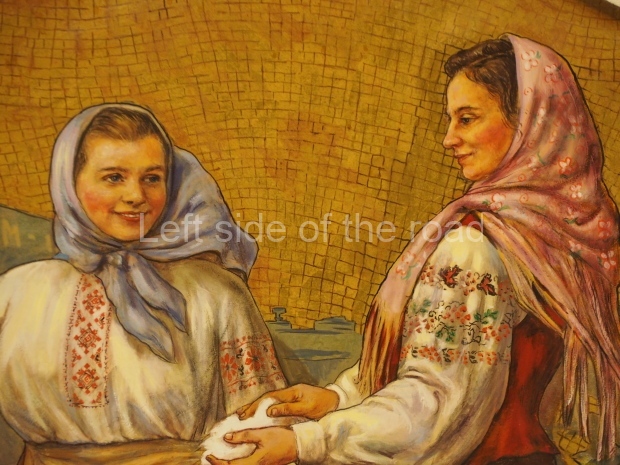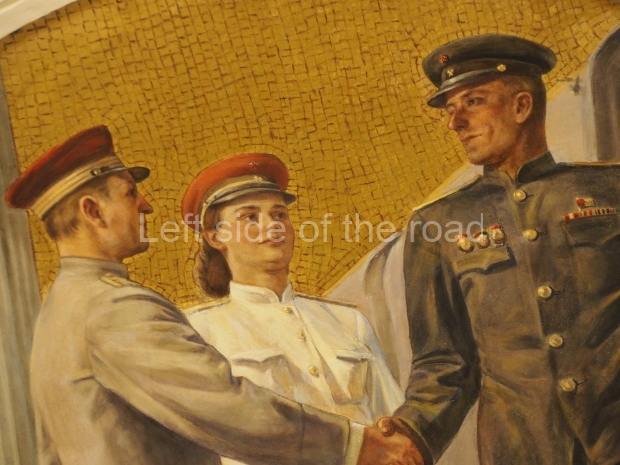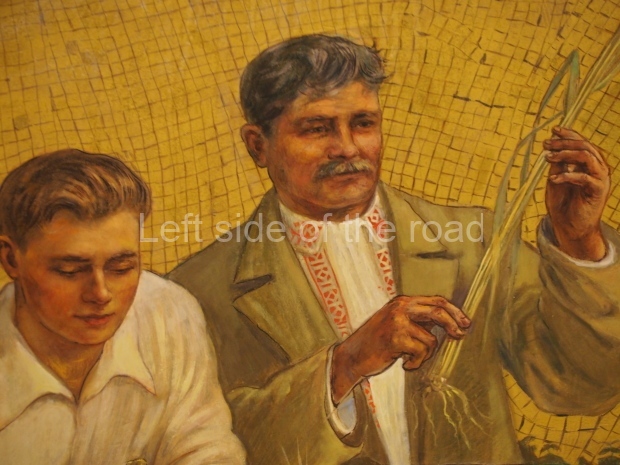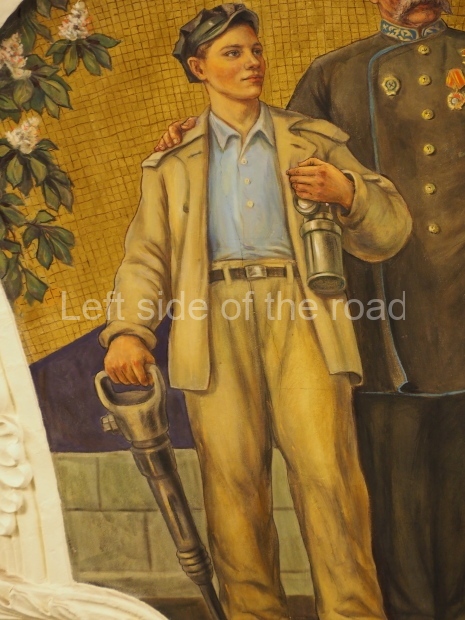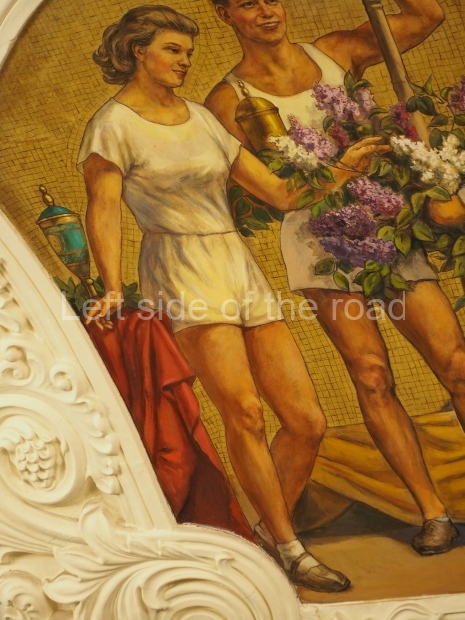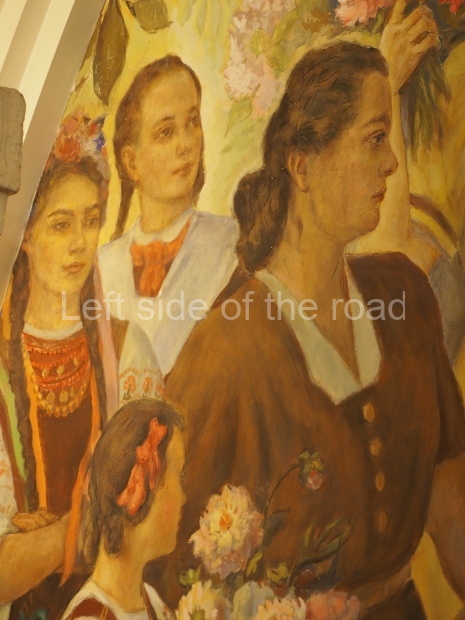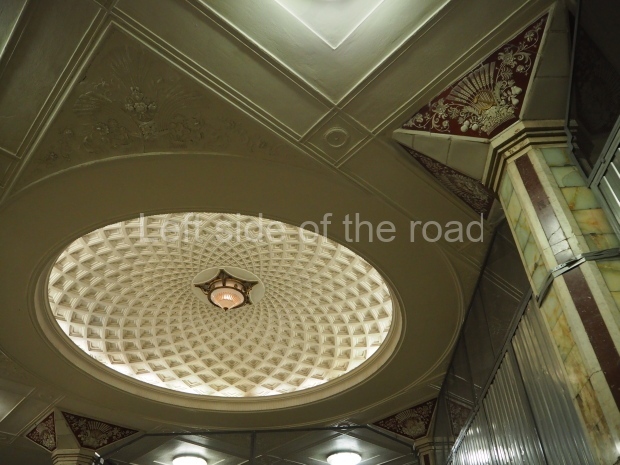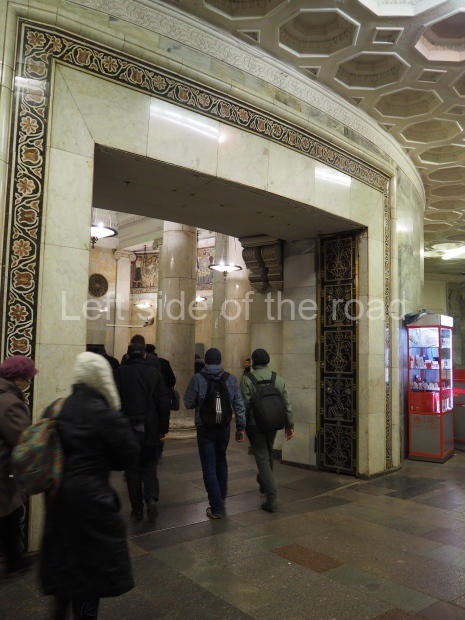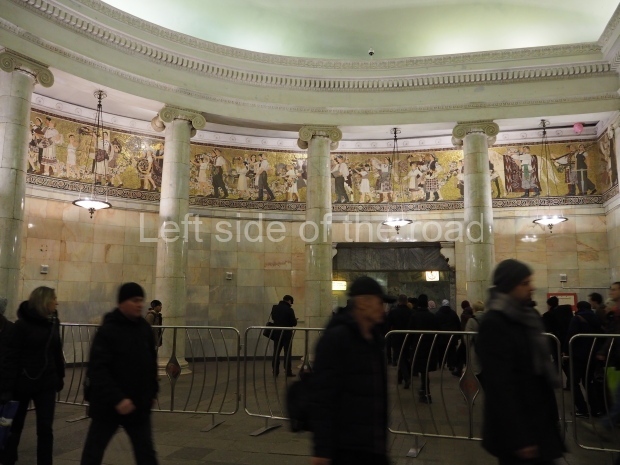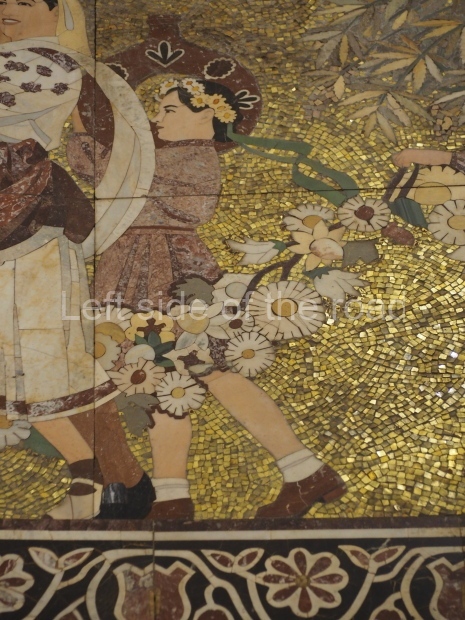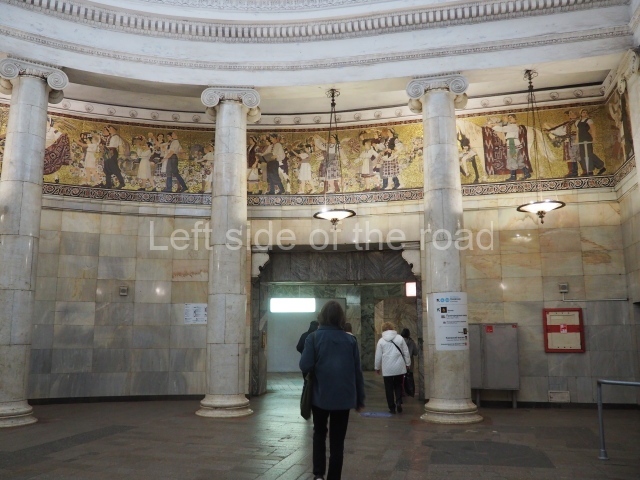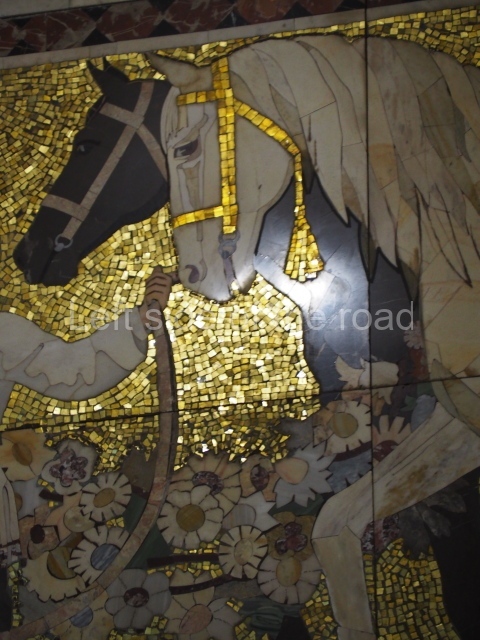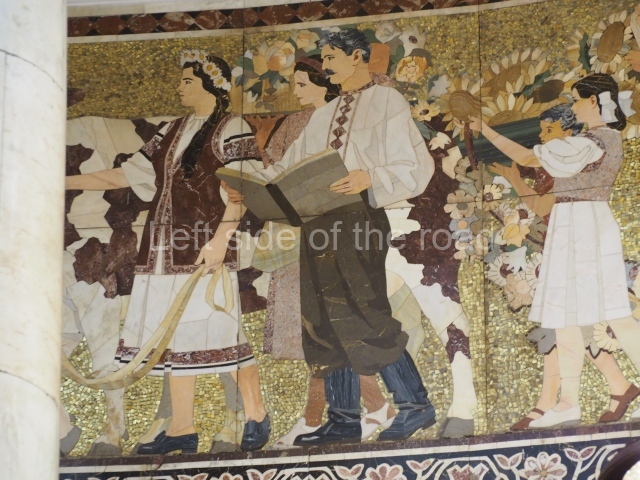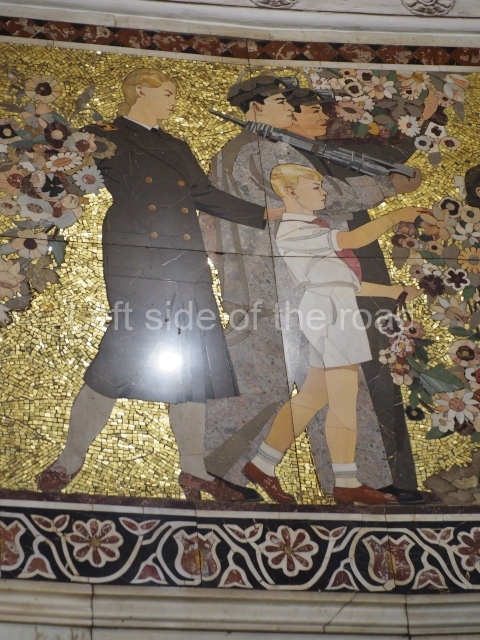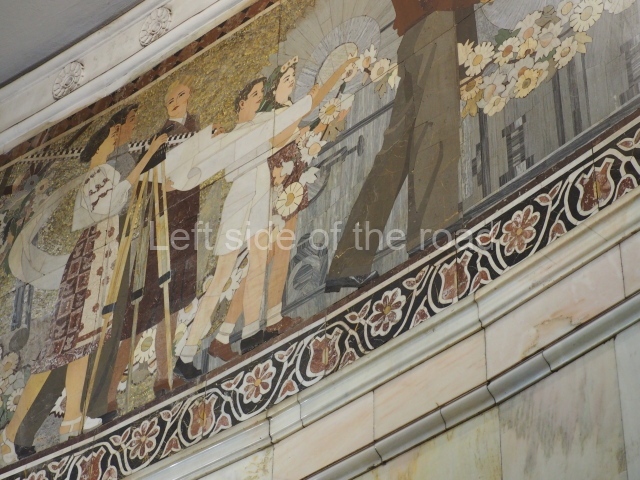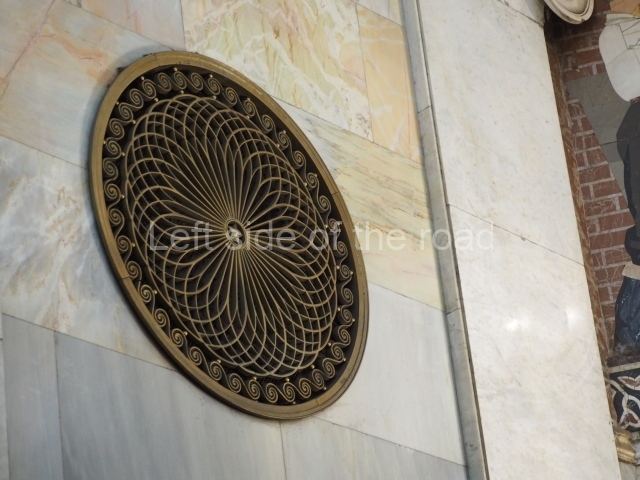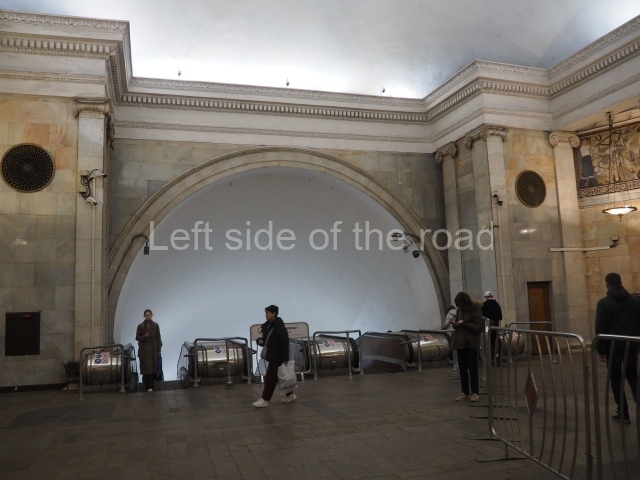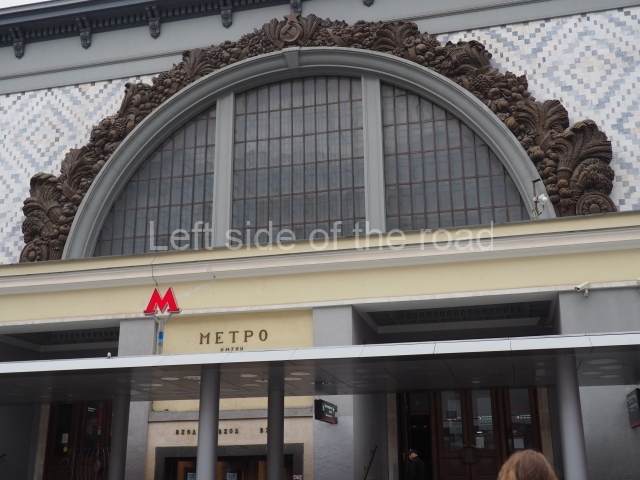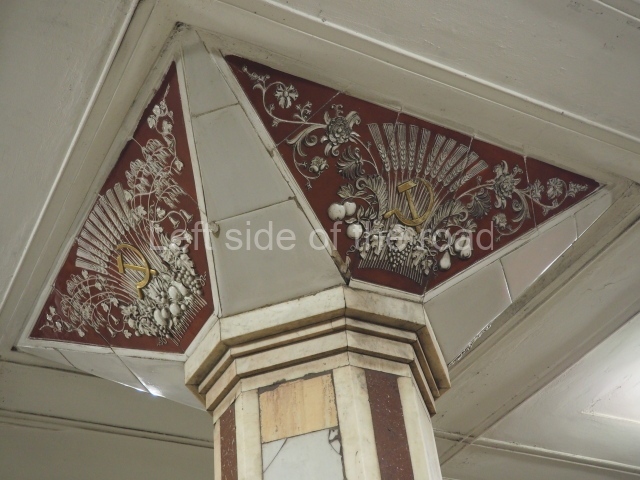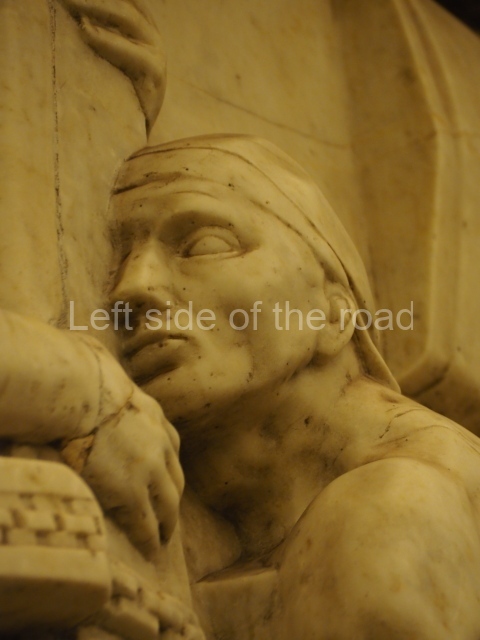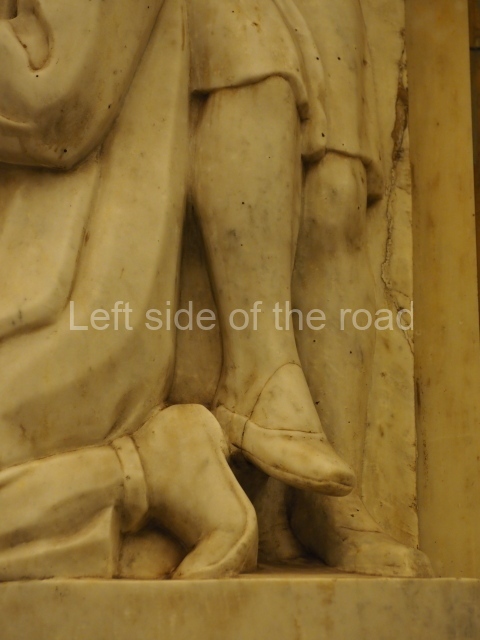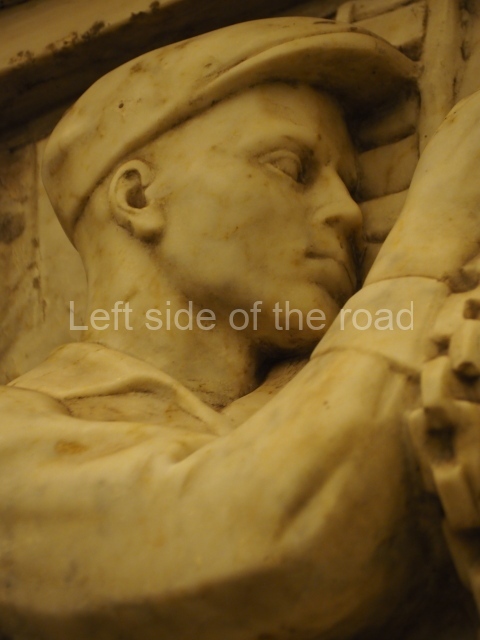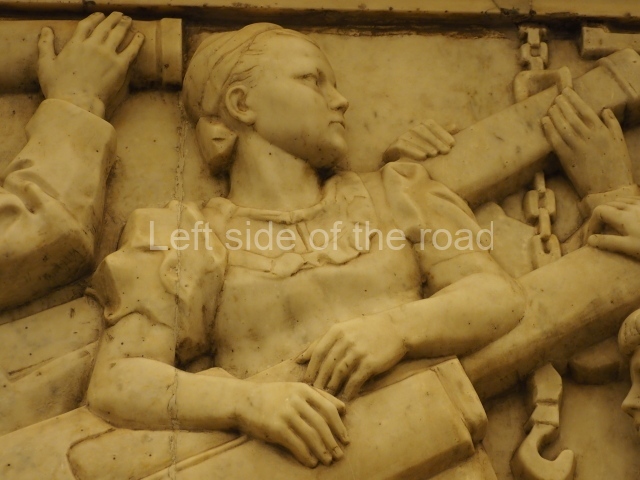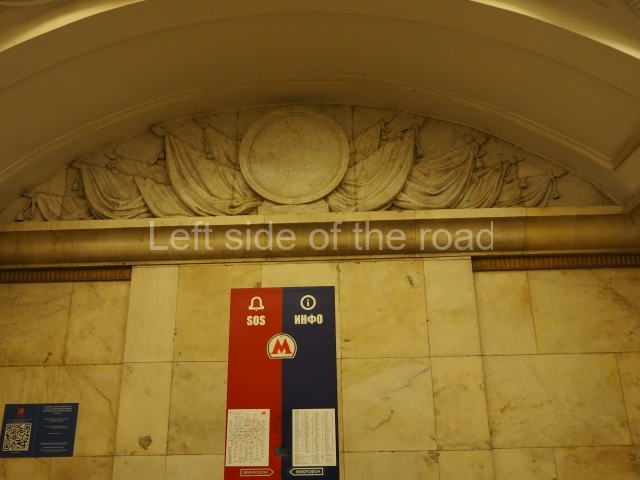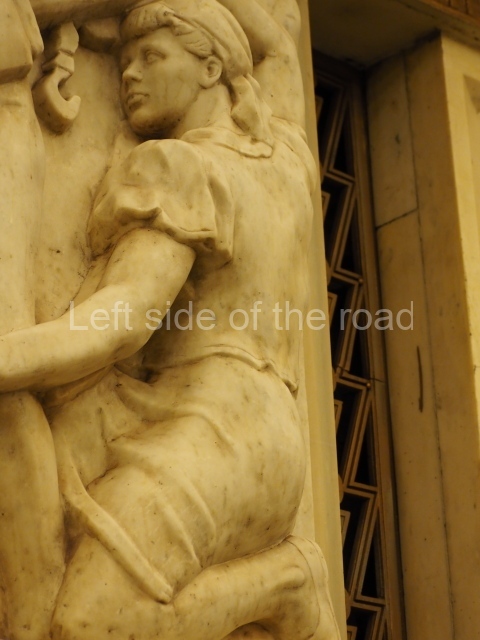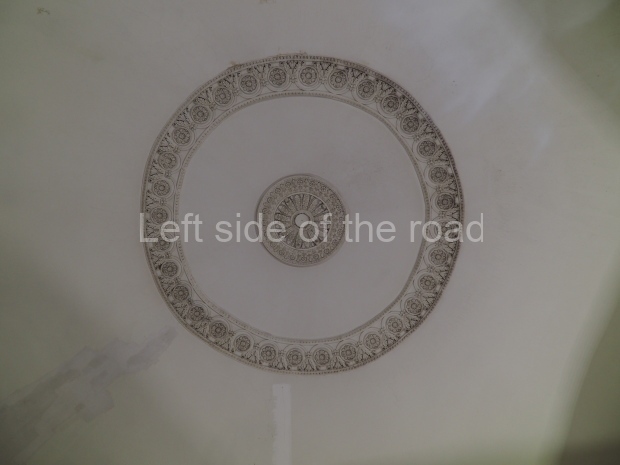
Kievskaya – Line 3
More on the USSR
Moscow Metro – a Socialist Realist Art Gallery
Moscow Metro – Kievskaya – Line 3

Kievskaya – Line 3 – 03
Kiyevskaya (Киевская), named for the nearby Kiyevsky railway station, is a station on the Arbatsko–Pokrovskaya line of the Moscow Metro. Opened in 1953, it is lavishly decorated in the quasi-baroque style that predominated in the early 1950s. The square pylons are faced with white Ural marble and elaborately patterned ceramic tile and the plastered ceiling is decorated with a series of frescoes by various artists depicting life in Ukraine. A large mosaic at the end of the platform commemorates the 300th anniversary of the reunification of Russia and Ukraine. Light comes from a row of hexagonal chandeliers. The architects were L. V. Lile, V. A. Litvinov, M. F. Markovsky, and V. M. Dobrokovsky.

Kievskaya – Line 3 – 02
Kiyevskaya has no vestibule of its own. Instead, escalators at the end of the hall lead to Kiyevskaya and thence to that station’s entrance, which is built into the Kiyevsky railway station.

Kievskaya – Line 3 – 01
For half a century Kiyevskaya was the terminus of the Arbatsko–Pokrovskaya line; the 2003 extension to Park Pobedy ended that situation.

Kievskaya – Line 3 – 04
Text above from Wikipedia.
Kievskaya, arbatsko-pokrovskaya line
Date of opening;
5th March 1953
Construction of the station;
deep, pier, three-span
Architects of the underground part;
L Lilye, V. Litvinov, M. Markovsky, V. Dobrokovsky
Transit to Stations Kievskaya of the Circle Line and Arbatsko-Pokrovskaya Line
Kievskaya is a cheerful, lively, and some vulgar station. It is decorated with a lot of gilt. Massive cubic pylons with oblique angles and slightly upper opening capitals are decorated by broad ceramic friezes, claret-coloured with gold. There are 12 pair frescoes in intricate frames on each pylon on the side of the distribution hall, which tell about the happy life in the Soviet Ukraine. If going from the eastern end of the station (passageway to the Circle Line), the first fresco on the left side is ‘Trio of Bandorist Girls’, the opposite – ‘Girls Embroidering a Portrait of T. Shevchenko’. Then – ‘Students’ / ‘Ceramist Girls’, ‘Fishermen on the Azov’ (pay attention to Azov sturgeon, which is just extinct from the Earth) / ‘Foreman on a Building Site’, ‘Cotton-growers’ (cotton plant has failed to get acclimatised in the Ukraine) / ‘Steel Makers’, ‘Apple-gathering’ / ‘Harvestings’ [sic] ‘Vegetable-gathering ‘ (the sizes of cabbage and pumpkins strike) / ‘Welcoming Miners with Flowers’, ‘Kindergarten ‘/ ‘Bricklayers’, Ukrainian Dance’/ ‘Welcoming an Officer’, ‘Grain-selectionist ‘ / ‘Vegetable-selectionist’, ‘Veterinary and Cattle-breeders ‘ / ‘Wine-makers’, Chemistry Scientists’ / ‘Veteran and Students of a Vocational School’, ‘Decorating Champions / ‘Engineering Workers’.
The gallery is crowned by a fresco, which occupies the whole west blank end of the station – ‘People Festivity in Kiev’. It shows joyful women in outstanding folk dresses and exultant children. There are also a monument of B. Khmelnitsky, newly erected buildings, and golden domes of the monastery. Cheerful crowd follows dancing girls who look at one place, but there is nothing. It is interesting that the sky at almost all the frescoes, including the central one, is golden, not blue.
The pylons on the side of the platforms have the same gypsum frames but with images of field flowers of the Ukraine, such as poppy, cornflower, lungwort, rue, thistle, comfrey, primrose, forget-me-not, instead of figurative paintings. The station is illuminated by intricate golden chandeliers under all three vaults. This many-coloured splendour is emphasized by unpretentious white marble of the pylons and walls and monotonous grey granite of the floor.
The passageway to the Circle Line begins at the eastern end of the station. If going to the Filevskaya Line by rules, one should use a bridge left of Fresco ‘People Festivity in Kiev’. The stairway leads to a rather long corridor which ends at an intermediate escalator hall. Then, three escalators go down to Kievskaya station of the Circle Line and four escalators go up to a semi-circular hip-roof escalator hall. Turning right beyond the escalator, one appears at Kievskaya station of the Filevskaya Line. If you are in a hurry, you may breech the rules and use the other bridge located closer to the eastern end of the station. It leads to a corridor (which is sometimes closed)
which ends at the same intermediate escalator hall but on the other side. The semi-circular hip-roof escalator hall is decorated like Kievskaya station of the Arbatsko-Pokrovskaya Line. It is decorated with a white marble colonnade of eight columns of the Ionic order. There is a wide mosaic frieze – ‘Donations to the Coat of Arms of the Soviet Ukraine’ – on the wall lower the vault. Coat of Arms of the Soviet Ukraine is located over the arc of exit, opposite the escalator tunnel. From the left and right sides of it, Ukrainian smiths, reapers, engineering workers, children, pioneers, miners, gardeners, cattle-breeders, and engineers present things they made to the coat of arms. The figures of donors are designed in an Egyptian style. The composition itself shows whose portrait was at the place of the coat of arms earlier. The walls of the corridor which surrounds the hall are faced with very decorated onyx with intricately alternate white, grey, brown, and purple stripes.
Text from Moscow Metro 1935-2005, p30/1
Location:
GPS:
55.7442°N
37.5645°E
Depth:
38 metres (125 ft)
Opened:
5 April 1953
More on the USSR
Moscow Metro – a Socialist Realist Art Gallery






























